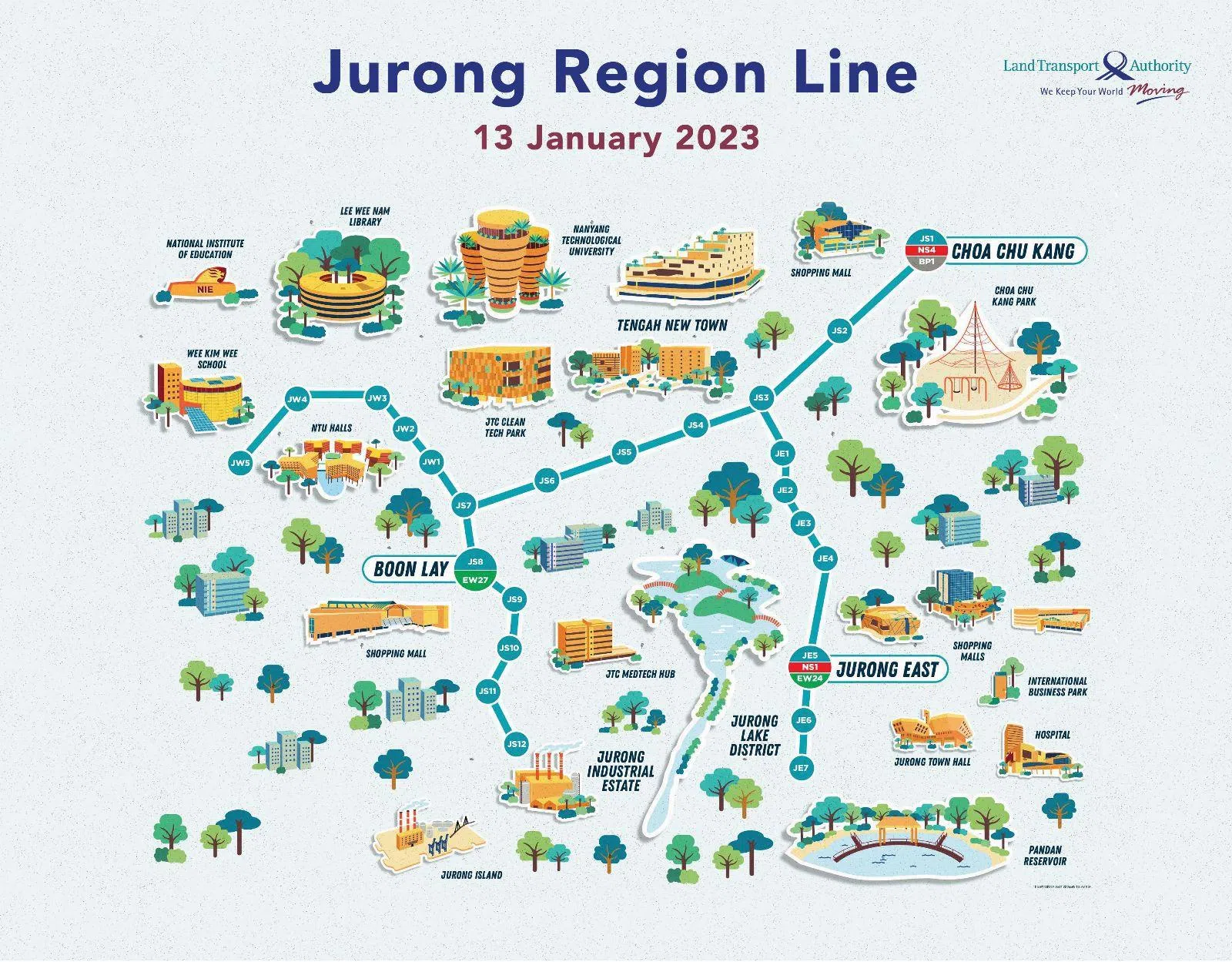Construction of Jurong Region Line begins, MRT stations to open in three stages from 2027 to 2029
Sign up now: Get ST's newsletters delivered to your inbox
Follow topic:
SINGAPORE – Construction of the Jurong Region Line (JRL) moved up a gear on Friday after more than three years of preparation works, with the official ground-breaking and launch of the track viaduct in the Tengah area.
Slated to open in three stages from 2027 to 2029, Singapore’s seventh MRT line is projected to have its daily ridership grow from 200,000 in the initial years to more than 500,000 along with the development of the Jurong Innovation District, Tengah Town and Jurong Lake District, said the Land Transport Authority (LTA).
The 24km-long MRT line has 24 stations, with three interchanges – Boon Lay, Choa Chu Kang and Jurong East – to connect commuters to other MRT lines.
The JRL is expected to significantly improve connectivity in the western part of Singapore and support developments in the Jurong area, said the LTA, adding that more than 60,000 additional households are projected to be within a 10-minute walk to a train station when the line is completed.
Commuters travelling to the western part of Singapore will enjoy shorter journey times, said the LTA, citing how the JRL will shave 25 minutes off the current one-hour journey from Choa Chu Kang MRT station to Nanyang Technological University’s Lee Wee Nam Library via bus and train.
On Friday, contractors hoisted up one of the concrete segments of the track viaduct as part of the launch ceremony. These concrete segments can weigh up to 40 tonnes each.
In all, there will be approximately 12,000 such segments to form the 24km line, which will snake around or cut across existing infrastructure such as busy roads, major expressways and canals.
In a speech at the event, Transport Minister S. Iswaran said building the line “through such a densely developed corridor poses stiff challenges”.
At the three interchange stations – Boon Lay, Choa Chu Kang and Jurong East – some of the existing station structures have to be taken down and strengthened, he noted.
To minimise disruptions at these busy stations, construction activities have been carefully staged and virtual reality technologies used to optimise station layouts and ensure commuters can still move smoothly from point to point, he said.
Some parts of the viaduct will be close to existing buildings, like Housing Board blocks – within 10m to 15m, Mr Iswaran said.
When asked, the LTA said one location where the track comes that close to existing buildings is the stretch between Choa Chu Kang Way and Choa Chu Kang Avenue 3.
Permanent sound barriers will be installed along viaducts near homes to minimise noise disturbance, said LTA.

Contractors hoisted up one of the concrete segments of the track viaduct as part of the launch ceremony on Friday.
ST PHOTO: NG SOR LUAN
When construction involves busy roads, the work will be done only late at night to minimise inconveniences. The LTA said traffic diversions along Choa Chu Kang Avenue 3, Jurong East Central and Jurong West Avenue 4 have already been implemented to allow for the construction of stations and the viaduct.
The JRL will have 62 fully automated, driverless three-car trains, which will arrive from South Korea’s Hyundai Rotem Company by the middle of 2024. The line’s capacity can be expanded to four cars as demand increases.
Mr Iswaran said the JRL trains will have slightly smaller carriages to negotiate tight curves along sections of the line.
For example, each JRL train carriage will be 5m shorter in length and 0.45m narrower in width compared with Circle Line train carriages.

The 24km-long MRT line has 24 stations, with three interchanges to connect commuters to other MRT lines.
PHOTO: LTA
The LTA said JRL stations will be equipped with photovoltaic solar panels to provide energy for their operations, to reduce the carbon footprint from rail operations.
The design of the stations allows crossflow natural ventilation, said LTA, highlighting features such trickle-vents in the roof to allow hot air to escape and louvres that allow more air to flow through the platform help to reduce the reliance on fans and air-conditioning.
To reduce energy consumption, trains will have sensors that dim the cabin lights during the day. Similar to existing MRT lines, the JRL will have a regenerative braking system which uses energy produced by trains during braking to power nearby trains or stations, Mr Iswaran said.
When the JRL was announced in 2018, it was supposed to be opened in three stages from 2026 to 2028. This has since been pushed back by a year due to delays caused by the Covid-19 pandemic.


